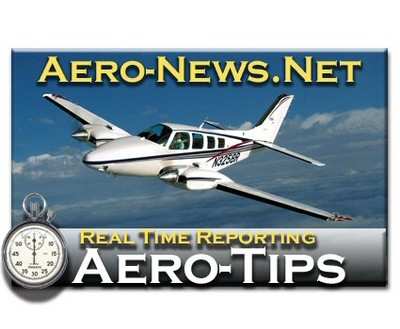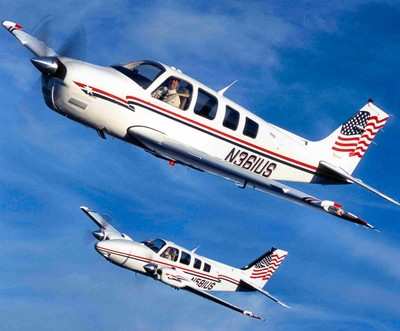Aero-Tips!
A good pilot is always learning -- how many times have you heard
this old standard throughout your flying career? There is no truer
statement in all of flying (well, with the possible exception of
"there are no old, bold pilots.")

Aero-News has called upon the expertise of Thomas P. Turner,
master CFI and all-around-good-guy, to bring our readers -- and us
-- daily tips to improve our skills as aviators. Some of them, you
may have heard before... but for each of us, there will also be
something we might never have considered before, or something that
didn't "stick" the way it should have the first time we memorized
it for the practical test.
Look for our daily Aero-Tips segments, coming each day to you
through the Aero-News Network.
Aero-Tips 10.02.06
For several years I managed and flew two Beech Barons for a
highway construction company. The boss was also a pilot; we both
flew both airplanes, and never knew precisely when we'd fly next,
or which airplane we'd have to take.

Like many airplanes, the fuel filler ports on the Beechcraft are
located near the outboard part of the tanks. This means that, when
the fuel level in a tank is anywhere below about 3/4 full, there is
no fuel visible when you remove the filler cap. Because we
sometimes returned very late at night, after the FBO had closed,
and because we could not always predict when the next flight would
have enough of a passenger load that we could not take off with
full fuel, many times we did not fuel the airplane after a trip.
Consequently we had to rely on other ways besides a visual check to
confirm fuel level -- because often the other guy was the last to
fly the airplane.
In our operation we could confirm fuel level by:
- Visual check. If the fuel load was great
enough that fuel was visible through the filler port, we knew a
tank was at least about 3/4 full.
- External gauges. Our particular airplanes had
"sight gauges" on the top of each wing that fairly accurately
indicated partial fuel loads.
- Cockpit gauges. Not always a reliable
indicator, the cockpit fuel level gauges nonetheless provided an
idea of the fuel remaining in the tanks.
- Fuel totalizer. Our airplanes both had
electronic fuel totalizers that very accurately measured fuel burn,
subtracting that from the beginning fuel level. This provided a
figure for fuel remaining on board-which was extremely accurate if
our manual inputs of fuel level were accurate after each refueling,
which was not always a "top-off".
- Written record. To help track flight time,
expenses, and other items we kept a written log in each airplane.
We wrote the date, Hobbs meter time and amount of fuel added each
time we put fuel in an airplane. Knowing that each plane had about
four hours' fuel capacity with IFR reserves permitted us to judge
the fuel remaining by looking at the current Hobbs time.
My procedure was to check each of these items before
preflighting for a trip. If any of the indications disagreed
with the others, and fuel was not visible in both filler ports, I
would add fuel until I could visually check the level. In this way
I could be certain that neither I nor the other pilot had made a
mistake or omission in recording the fuel level.
Aero-tip of the day: Check fuel level in as
many ways as possible before taking off. If there's any doubt about
fuel on board, add fuel until you can check the level visually.
 NTSB Final Report: Cozy Cub
NTSB Final Report: Cozy Cub ANN FAQ: Contributing To Aero-TV
ANN FAQ: Contributing To Aero-TV Classic Aero-TV: Seated On The Edge Of Forever -- A PPC's Bird's Eye View
Classic Aero-TV: Seated On The Edge Of Forever -- A PPC's Bird's Eye View ANN's Daily Aero-Linx (04.29.25)
ANN's Daily Aero-Linx (04.29.25) ANN's Daily Aero-Term (04.29.25): Execute Missed Approach
ANN's Daily Aero-Term (04.29.25): Execute Missed Approach




